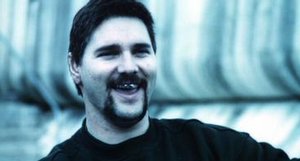
The Australian Film Institute has been handing out annual prizes since 1958, but 1976 was the first year with enough features produced to warrant multiple nominations. That first Best Picture category (covering 1975-76 releases) was notably strong – Caddie, The Devil’s Playground, Picnic at Hanging Rock and Pure S. While it’s hard to argue with Fred Schepisi and Playground as worthy winners, it seems extraordinary now that Picnic received no prizes from its seven nominations; having opened a year earlier and broken box-office records, it may have been seen as sufficiently rewarded, compared to the newly released Playground.
Mad Max and Chopper wouldn’t go down in a fight, right? Wrong. The 1979 and 2000 award years, when My Brilliant Career and Looking for Alibrandi respectively won Best Picture, are curiously alike. Both winning films were produced, directed and written by women, with strong female leads, and shared the awards pool with films about iconic male anti-heroes. (Japanese Story vs Gettin’ Square in 2003 saw the pattern repeated).
The Year My Voice Broke (1987) was a close winner because SPAA protested at the time that it was part of a telemovie package presold to Network Ten and ineligible for feature awards. The AFI decreed it could compete, dashing the award hopes of High Tide, Ground Zero and The Tale of Ruby Rose.
Other award years, like 1976, are notable for fielding a Best Picture category full of deserving winners. Muriel’s Wedding (1994) opened within weeks of The Adventures of Priscilla, Queen of the Desert. Priscilla ultimately made more money at the box office, but Muriel took the AFI Award, in the process beating Bad Boy Bubby and Russell Crowe and Jack Thompson in The Sum of Us. In 2002, Rabbit-Proof Fence was the victor ahead of three other Indigenous-themed nominees: Beneath Clouds won Best Director, The Tracker earnt David Gulpilil a Best Actor prize and Australian Rules netted the adapted screenplay award.
Which brings us neatly to 2009. Warwick Thornton's Samson and Delilah has all the ingredients of a winner – rapturous critical response, audience love, overseas acclaim – but there is strong competition. The AFI has taken the unprecedented step of expanding the Best Picture list from four to six, in recognition of this year’s other successes. Likely to join Samson and Delilah are Robert Connolly's political thriller Balibo, Adam Elliot's claymation feature Mary and Max and Steve Jacobs's powerful Disgrace. One spot will probably go to a blockbuster – Baz Luhrmann's Australia or Bruce Beresford's Mao’s Last Dancer, which may be disadvantaged by having only just opened when voting began. Rachel Ward's Beautiful Kate and Sarah Watt's My Year Without Sex would be guaranteed nominees in any other year, but could well be fighting for the last spot among six. Likely frontrunners in the lead acting categories are Anthony LaPaglia for Balibo and Frances O’Connor in Ana Kokkinos's Blessed.
This year’s awards take place on 11 and 12 December. Visit the AFI website for more details.









